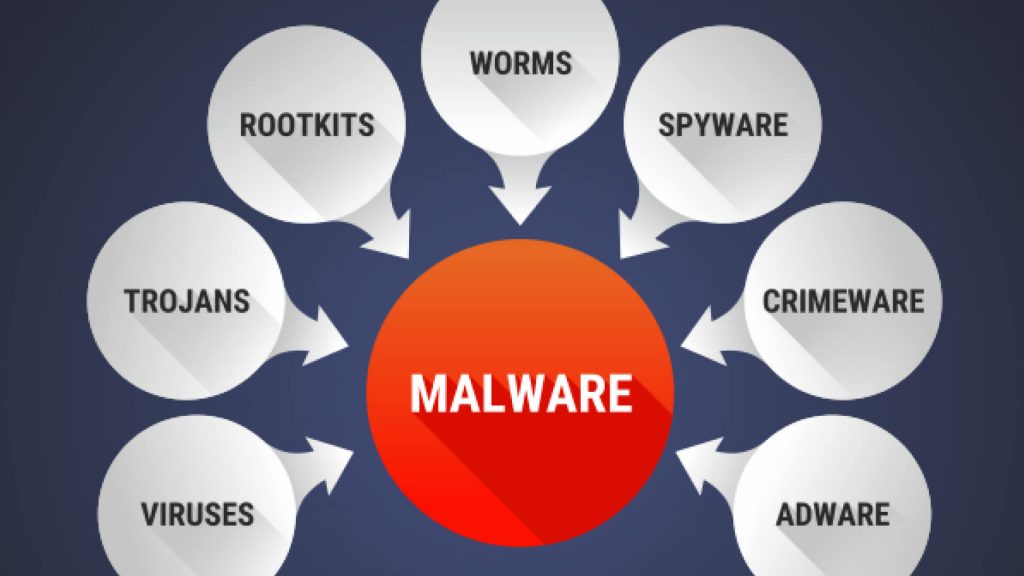Malware, short for malicious software, is typically install on a website by cybercriminals. Malware is a broad term relating to a number of malicious programmes. It can spread viruses, steal financial or personal data and even hijack computers. In this article we explain about the different types of malware.
To explore the malware where in 2015, five out of six companies are target by cybercriminals in some way. Every day, over one million malware threats are release. When hacker send malware laced spam emails, it only takes 82 seconds for someone to become the first victim and over 60% of the website that expose computers to malware are legitimate sites that have been compromised.
Type of Malware
Bugs
A type of error, flaw or failure that produces an undesirable or unexpected result. Bugs typically exist in a website’s source code and can cause a wide range of damage.
Virus
A piece of code that is loaded onto your website or computer without your knowledge. It can easily multiply and be transmitted as an attachment or file.
Trojan horses
Much like the myth, a Trojan disguises itself as a normal file and tricks users into downloading it, consequently installing malware.
Adware
A type of malware that automatically displays unwanted advertisements. Clicking on one of these ads cloud redirect you to a malicious site.
Worms
A worm relies on security failures to replicate and spread itself to other computers. They are often hidden in attachments and will consume bandwidth and overload a web server.
Bots
A software program created to perform specific tasks. Bots can send spam or be used in a DDoS attack to bring down an entire wbsite.
Ransomware
Ransomware denies access to your files and demands payment through Bitcoin in order for access to be granted again.
Spyware
A type of malware that functions by spying on a user’s activity. This type of spying includes monitoring a user’s activity, keystrokes and more.
Signs that you may have Malware
You’re sending out spam/emails and messages being sent without your prompting
If your friends tell you that you gave them suspicious messages and links via social media or email, you may have been a victim of spyware. These may be triggered by setting or failing to logout weak passwords on your accounts.
In the end, understanding how malicious software affects your machine is better so that you can take steps to rectify the situation as soon as possible. Whether your system has experienced these symptoms or not, it’s always clever to perform regular malware scans to make sure your business is safe. Contact us today to learn more about malware, and IT security.
Programs running, opening and closing automatically
Malware may also be present when your programs automatically open and close. However, check whether certain programs are meant to behave this way, or whether they are simply incompatible with running your hardware first before you come to the conclusion that your computer has a virus.
Lack of storage space
There are various types of malware that can manipulate the saved files on your computer. Most tend to fill in suspicious files to your hard drive. When you encounter some obscure applications you’ve never used before, don’t open the download, check the name of the program over the internet and use antivirus security when you’re sure it’s malware.
Pop-ups ads, websites, toolbars and other unwanted programs
These are annoying signs of a virus being in your machine. Pop-ups come from clicking on questionable sites, reacting to survey questions to access the service of a website or downloading free apps. Do not click on ads where Susan claims she earned $8000 a month staying at home. When pop-ups appear from the blue, refrain from clicking anywhere on the pop-up page and just close out of the browser, and immediately use your anti-malware tool.
Equally, free applications allow you to download their service for free but the installation process can be riddled with malware. When you’re installing a program from the Internet it’s easy to just skim over the terms and conditions page and repeatedly press next. This is where they get you. In the process of skipping over certain installation steps, you might have agreed to accept a new default browser, opening unwanted websites and other programs filled with viruses. Just be cautious the next time you download something for free. It’s best to try avoiding any of these practices when you can in order to protect your computer.
Website or computer freezing or crashing
If your PC crashes regularly, it’s usually either a technical problem with your system or a malware infection. You might not have installed the latest drivers for your device or the programs you’re running could possibly be incompatible with your hardware. If none of these problems are apparent in your PC then the virus could be conflicting with other programs causing your crashes.
To check what caused your last Blue Screen of Death (BSOD) go to Control Panel> System and Security> Administrative Tools> Event Viewer and select Windows Logs. Those marked with an “error” are your recorded crashes. For troubleshooting solutions, consult forums or your IT department to figure out what to do next.
Putting a Stop to Malware
- Have you scanned your website today?
Scan your website daily for malware and vulnerabilities. Make sure your service will automatically scan and remove malware found on your site.
- Are you sure you want to download that?
Do not click or download an attachment from any unknown source. Files ending in, .jpg, .png, .pdf, .docx, .xlsx, and .pptx can be harmful, but are typically safer than other file extensions.
- Is this cruise to the Bahamas really free?
If an ads seems too good to be true, it probably is. Avoid clicking on pop-up ads, especially from brands you don’t recognize.



